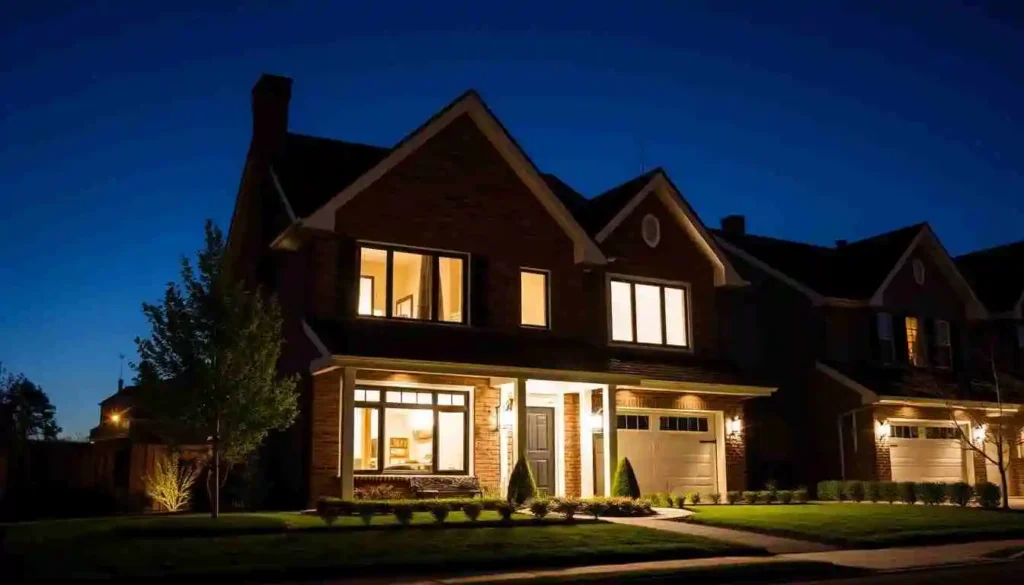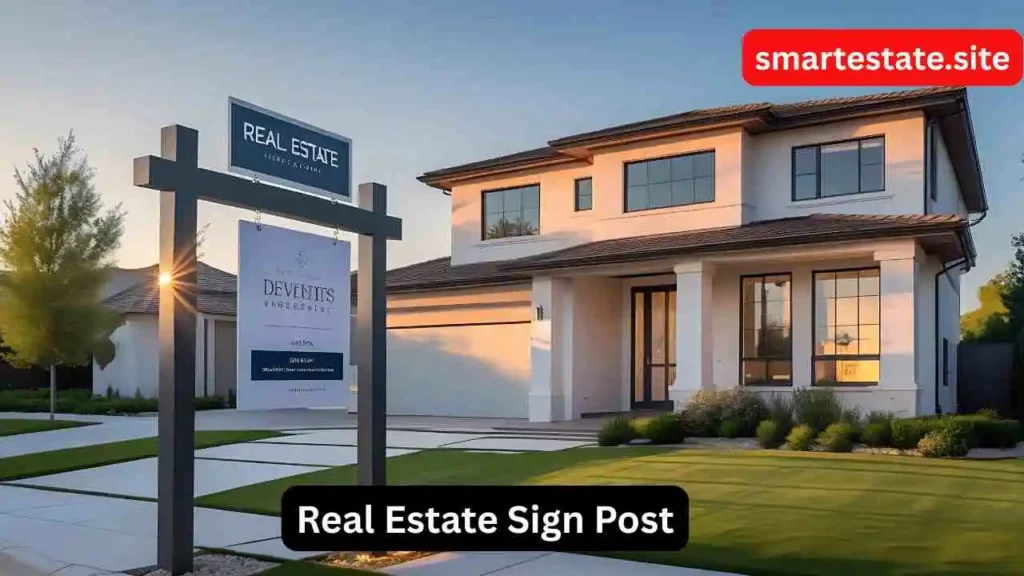But with all the whiz-bang technology options — social media, listing sites, virtual tours — there’s still nothing like the impact of a strategically placed sign catching the eye of an interested party passing by and getting them to ask, “Is that house for sale?”
10 Expert Real Estate Sign Post Strategies
Expert Tips to Get the Most Out of Your Real Estate Sign Post
Revealing the Psychological Impact of Physical Signage
Something is interesting about how a traditional physical sign can do what a loud, online ad might not. Maybe it’s because we believe what we see with our eyes more than what we see with our digital ones. Or maybe it is that fleeting spark of interest that flashes when one passes through a nice neighborhood and catches sight of a ‘‘For Sale’’ sign. Here is where the magic starts.
Increasing Visibility and Local Branding
Think of that sign as a tiny billboard, not just for the property, but for you. It’s Branding 101. It’s that simple; every time a passerby sees your new logo, they are free local advertising. Close to free, anyway — you do have to spend on the sign.
Strategic Gameplan#1 – Choose the Right Position
Would you consider a minimalist position if not for penalty positions, they will feel as vacant as this ranch.
Corners and Intersections
If we are being really honest, it is all about location. You want your sign where it can be seen and noticed.It is practically unnoticeable if it is surrounded by greenery or located in a quiet cul-de-sac. Focus on corners, junctions, or locations where cars are inclined to decelerate.

Respect and Obey Local Laws
Don’t overlook the rules. Some cities (especially HOAs) are strict. Nothing will screw up your marketing like having to tear down a sign for noncompliance.
Method #2: Work With The Power Of Simple, Not Complex
Use Bold, Clear Typefaces and Colors
No one is going to go out of their way to read these complicated script fonts as they speed by. Choose large, readable typefaces that are readable from a distance of 30 feet. High-contrast combinations, such as black on white or blue on yellow, can help your signs pop.
Less Can Be More
I mean, unless you plan on squishing your whole life story and details onto a 24′′ by 18′″ sign? That’s a no-go. Keep it short and sweet with the basics only: “For Sale,” your name, contact information, and, if you must, a QR code.
STRATEGY 3 – CHOOSING PREMIUM MATERIALS CAN HELP YOU CREATE VALUE.
You Have A Choice (Of Wood, Metal, Or PVC) Pick One
Here it is, with the text rephrased like you asked: Let me know if you have more edits you’d like to make. Elements to weigh when selecting sign materials
Low-cost signs could not be as good and might not appear polished. We offer easily customisable and durable PVC signs. Metal signs provide strength and a professional look, but they are more expensive. I love old wooden signs, but they need to be varnished to look nice every season. You should consider the sign choice to be an investment in the long run.
Weatherproofing Essentials
Your sign will also be exposed to different types of weather, including wind, rain, and direct sun. Make it last with UV coating, reinforced posts, and rust-proof hardware. Skimping on weatherproofing may result in premature weathered wear.

4- Emphasizing Key Information
Accessibility to all fans
When deciding whether to put a phone number or a QR code on your signage, think of everyone as the audience. QR codes may be all the rage, but a plain old phone number can be more user-friendly, especially for the less tech-savvy. Why not have both and accommodate the tastes of more viewers?
Powerful Eye-Catching Methods
Massive “For Sale” text may initially grab some focus, but you will find that what draws in viewers is often your name and the teaser of more to come. Through a carefully chosen font and layout, you can also captivate viewers’ attention and increase the attractiveness and visibility of your sign.
5- Harnessing Directional Signs
On weekends, for example, highly visible directional signs will act as path markers, directing potential buyers straight to the front door. These signs are also scannable; the trick is to use these scattered signs to define destinations, not just throw down a sign.
Optimal Sign Placement
Don’t just place signs near the property. Or stash them at key turns within a stone’s throw: at eye level to passersby, being sure to verify they’re in line with traffic coming their way. Careful calculation on the size and position of the signs, for optimum visibility, can directly affect how your message comes across to the public.
6- Personalizing Your Brand
The question of whether to include agents’ photos or logos comes down to personal preference. Some say a photo adds trust (sign of the times), while others think it’s outdated. Having a good-looking, professional headshot can make a personal connection to a client and help add a human touch to the real estate buying/selling experience.
Developing Familiarity and Trust
Gaining trust and familiarity is key to appealing to new clients. Your imagery, messaging style, and brand colours will all help to craft a cohesive and trustworthy brand personality that your Ideal Client will just love.
7- Improving Visibility in the Dark
Using solar lights will go a long way toward illuminating your sign to make it visible throughout the night. Cheap little solar lights can be quickly installed and can vastly improve visibility at night.

Safety Reflective Design
Some people use reflective lettering to catch the eye of passing headlights on signs. This also builds authority as well as visibility.
8- Brand Consistency
Holding your brand consistent should be at the core of your overall strategy.
Consistency Across Listings
Keep the brand identity consistent through the signage. Keep the same typeface, color scheme, and page layout to help make your message memorable.
Why Colors, Fonts, and Layouts Matter
And while dynamic shades — such as hot pink — might attract notice, it’s important to consider shades that resonate with your personal or brokerage brand. Choose clean fonts, not something casual such as Comic Sans.
Tactic #9 – Tap into the rider’s creative side
“Under Contract” Vs.”Just Listed”
Riders, the other signs that accompany the main one, allow for some flexibility. Feature them with information such as “Coming Soon,” “Price Reduced,” or features like “Pool Home” – tell a story with these panels!
Personalize your messages to Increase Engagement
Add custom messages like “Ask Me About This Yard!”to infuse your signs with personality and initiate some dialogue.
Tactic #10 – Keep an Eye on Your Signs (And Clean Them Regularly)
Check for Wear and Tear
Keep your signs in good condition, so that you don’t appear negligent. Go back and re-evaluate your listings from time to time and make sure everything looks tidy.
A Clean Sign Represents a Clean Agent.
Maintained signs mean that you care about your listings and that you will take care of your clients.
Mistakes You Must Avoid
Avoid Information Overload
Less is more; overloading a sign with information can detract from the message.
Adhering to HOA Regulations
Obtain permission whenever necessary. Aside from having his sign cut down, flouting the rules of his Homeowners’ Association can also ruin his local reputation.
Successful Real-Life Examples
Example of a Sign That SOLD the Home in 48 Hours
One real estate agent slapped a sign on that reads: “Pet-Friendly Neighborhood!” to the basic sign. The next morning, they received a call from a couple who were looking for a home for their dog. Their own house sold in a flash.
What Didn’t Succeed (and Why)
Another used neon colors and a fancy script font that made the sign look more like a party invitation than a real estate ad. Onlookers cruised by without suspecting for a moment that it was for a place. Jr. was taught a very important lesson.
Final Thoughts on Real Estate Sign Post
Even in this day of applications and internet listings, a well-designed real estate sign may still have a significant impact. When all parts are working correctly, it is not only an identifier but a formidable attractor. There is something tangible about its physical presentation. Not every time, but often enough to make it worth the effort to get good at it.
Your sign is a silent salesperson. Make sure it has the correct message.
❓Frequently Asked Questions About Real Estate Sign Post Strategies
Q1: How high should a real estate sign be?
Usually from 4 to 6 feet. It should be high enough to register, but not so high that it looks odd or tentative.
Q2: Is there a useful place for QR codes on signs?
Yes, particularly in urban areas. Nevertheless, make sure to provide a phone number also, since it will present more choices.
Q3: How do you decide when to install a new sign?
Midweek is considered best. The timing is set up for the sign to catch the eyes of passers-by before the weekend, when foot traffic for open houses is generally higher.
Q4: Do I utilise old signs from other listings?
If they are undamaged and are generics, OK. But some tell-tale signs can detract from your professional appearance.
Q5: How many signs should you have for an open house?
Do so if at least 4–6 signs are available. Add a few more for a lot of turns, or a difficult-to-find place.
Read More
Real Estate Lawyer Near Me Free Consultation
Ultimate Guide Real Estate Lawyer Atlanta
